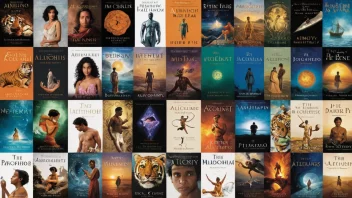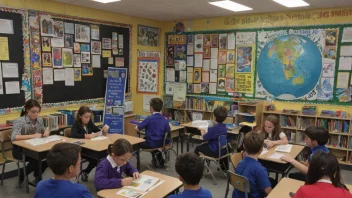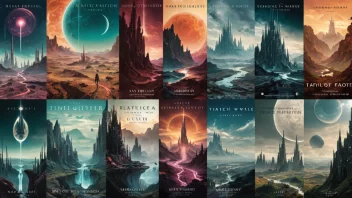In an age where technology permeates every facet of our lives, it is no surprise that literature has taken on the challenge of exploring its implications in profound and often unsettling ways. From the early dystopian visions of George Orwell to the more recent narratives of cyberpunk and speculative fiction, authors have long attempted to grapple with the complexities of technological advancements and their societal repercussions. This article delves into the rich tapestry of fictional works that interrogate our relationship with technology, highlighting key themes, notable authors, and the ever-evolving landscape of literary exploration in this essential genre.
The Dystopian Lens: Technology as a Harbinger of Control
Dystopian fiction has often served as a cautionary tale regarding the unchecked advancement of technology. George Orwell's "1984" and Aldous Huxley's "Brave New World" are seminal works that present bleak futures where technology serves as an instrument of totalitarian control. In these narratives, surveillance, manipulation of information, and societal conditioning highlight the dangers of a world where technology is wielded by oppressive forces.
Other notable dystopian works include Margaret Atwood's "The Handmaid's Tale," where reproductive technology is exploited to control women's bodies and autonomy. Similarly, in Ray Bradbury's "Fahrenheit 451," the proliferation of media technology leads to a society that shuns literature and critical thought. These narratives provoke readers to consider the ethical implications of technological advancements and their potential to erode individual freedoms.
Cyberpunk: The Intersection of Humanity and Technology
Emerging in the 1980s, the cyberpunk genre combines advanced technology with a gritty, often dystopian world. This subgenre, characterized by its focus on hackers, artificial intelligence, and corporate dominance, reflects society's anxieties about the future of technology. William Gibson's "Neuromancer" is a cornerstone of cyberpunk literature, presenting a world where cyberspace and reality blur, raising questions about identity, consciousness, and the human experience in a tech-dominated landscape.
Similarly, in Neal Stephenson's "Snow Crash," readers are introduced to a future where the virtual and physical worlds collide, revealing the consequences of corporate control over information and the implications of a hyper-connected society. These narratives not only entertain but also serve as a critique of contemporary issues such as privacy, corporate ethics, and the nature of reality itself.
Speculative Fiction: Imagining Alternative Futures
Speculative fiction takes a broader approach, envisioning alternate realities that challenge technological norms. Octavia Butler's "Parable of the Sower" offers a haunting look at climate change and social collapse while exploring themes of resilience and adaptation through technology. Butler's work emphasizes the importance of community and innovation in the face of adversity, showcasing how technology can be a tool for survival rather than just a source of oppression.
Moreover, in a more recent exploration, Nnedi Okorafor's "Binti" series blends African culture with futuristic technology, presenting a protagonist who navigates intergalactic challenges while embracing her heritage. These works showcase how speculative fiction can provide a space for underrepresented voices to envision futures that are inclusive and diverse, offering an optimistic counterbalance to the often grim portrayals of technology in dystopian narratives.
Children’s Literature: Introducing Technology to Young Minds
Children's literature also plays a significant role in exploring technology's impact, often introducing young readers to complex themes in an accessible manner. Books like "The Wild Robot" by Peter Brown present technology through the lens of empathy and connection, as a robot learns to navigate the natural world and form relationships with animals. This narrative fosters a sense of curiosity and ethical consideration in young readers regarding their interactions with technology and nature.
Furthermore, in works like "Ada Twist, Scientist" by Andrea Beaty, children are encouraged to embrace inquiry and exploration, highlighting the importance of science and technology in understanding the world around them. Such narratives not only entertain but also inspire the next generation to think critically about technology and its role in society.
The Evolution of Literary Trends
As technology continues to evolve, so too does its representation in literature. The rise of social media, artificial intelligence, and virtual reality has opened new avenues for authors to explore themes related to identity, connection, and isolation. Contemporary works such as "Super Sad True Love Story" by Gary Shteyngart and "The Circle" by Dave Eggers examine the implications of technology on human relationships and societal structures in a hyper-connected world.
Additionally, the emergence of interactive narratives and digital storytelling platforms indicates a shift in how stories are told and experienced. These innovations challenge traditional notions of authorship and reader engagement, inviting audiences to participate actively in the narrative experience. As literature continues to adapt to technological advancements, it remains a vital medium for critiquing and understanding the complexities of our relationship with technology.
Conclusion: The Ongoing Dialogue Between Literature and Technology
Fictional explorations of technology and its impact on society serve as a crucial dialogue between authors and readers, encouraging reflection on the ethical, social, and emotional dimensions of technological advancements. From dystopian nightmares to speculative realities, literature offers a diverse array of perspectives that challenge us to consider the implications of our technological choices. As we continue to navigate an increasingly complex digital landscape, engaging with these narratives not only fosters a love of reading but also nurtures critical thinking and empathy in a world where technology and humanity are inextricably linked.






